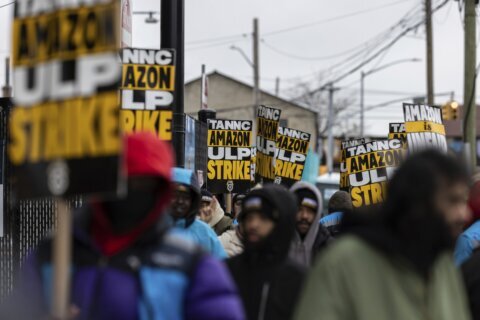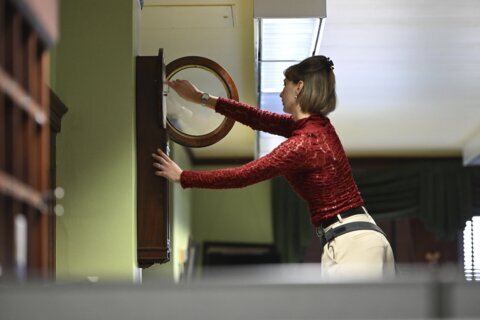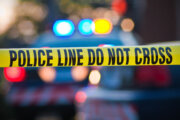PHILADELPHIA (AP) — Katherine Anderson trekked from Texas to Philadelphia last year for a college program she couldn’t find anywhere else, combining the music business, entrepreneurship and technology. Two weeks ago, she received the startling news the university would be shutting down within days.
The closure of the University of the Arts has left her and 1,300 other students scrambling to find somewhere to go or something to do.
By the time the school announced its closure, many colleges had already cut off admissions for the fall. Anderson was accepted into the music industry program at nearby Drexel University, which she said wasn’t a perfect match, but “the next best thing, I guess.”
“Because of all that’s going on, I felt very pressured to make a decision as fast as possible,” Anderson said. She is now suing the University of the Arts.
More colleges around the country have been closing as they cope with steep declines in enrollment, a consequence of both changing demographics and the effects of the pandemic. The closures in recent years have left tens of thousands of students in limbo — and at increased risk of never finishing their degrees at all.
Nationwide, private colleges have been closing at a rate of about two per month, according to the State Higher Education Executive Officers Association.
Before announcing it would close, UArts, as it’s often called, had trained musicians and artists, dancers and designers in Philadelphia for nearly 150 years. The school had suffered from plunging enrollment and said it was confronted with “significant, unanticipated expenses” that forced its closure. Several state and local investigations are underway into how the university ran out of money so suddenly.
“We have yet to receive the answer to that question,” Lynette Kuhn, a high-ranking official in the Pennsylvania Department of Education, said Friday in an online information session for University of the Arts parents and students. Kuhn was responding to one of several questions posed by frustrated students about what university officials knew of its precarious finances — and what they did about it.
“We understand that you students … face an impossible set of circumstances, with frustration that expands beyond measure,” Heather Perfetti, president of the Middle States Commission on Higher Education, an accrediting agency, said at the same session. “We all believe that no academic journey should include this kind of severe and abrupt disruption.”
Drummer Adam Machado, 18, came to the University of the Arts from New York’s Hudson Valley so he could study a range of styles, including jazz and contemporary, in a major city. He had a $32,000-a-year scholarship, and it’s unclear if any other schools will match that. But he also wonders if he’ll find the same curriculum, sense of community and ability to pursue gigs in both New York and Philadelphia, where he performed Wednesday night with a band called “Kids That Fly.”
He grieves for “not only me, but 1,000 other artists (who) are without a home.”
Like many classmates who went through the draining college search process just a year ago, he’s not sure what he’ll do next.
“You don’t really know where to start,” said student Cyrus Nasib, 18.
“It’s very numbing,” said Nasib, a theater major who had just signed a lease for an apartment near the college campus, since his parents are moving from the Philadelphia suburbs to the West Coast. “It kind of just saps your motivation to do anything.”
Enrollment at the University of Arts had dropped by nearly half since 2009. Nationwide, the number of college students in the U.S. had already been steadily decreasing for years before the pandemic led to a sharp drop in enrollment. Schools’ financial woes have been complicated further by the botched rollout of a new federal financial aid form, which has raised fears that hundreds of thousands of students will forgo college entirely.
The University of the Arts has made arrangements with a half-dozen colleges and universities to take in UArts students and help them complete their degrees. Formal agreements with a half-dozen other schools are under review by the school’s accrediting agency.
But the disruptions created by college closures have a history of derailing students’ educations.
Nationally, as many as half of students whose campuses close don’t resume their studies, according to the State Higher Education Executive Officers Association, whose data surveys both nonprofit and for-profit schools, including two-year colleges. Other students lose credits or have to spend more to enroll elsewhere.
Democratic state lawmakers held a hearing Monday on the University of the Arts shutdown, while the Philadelphia city council plans its own hearing for later this month.
“It throws so many red flags up,” said Councilman Mark Squilla. “How can the board not be aware of the financial situation and then say, ‘We just found out last minute we couldn’t get any money.’ Were they already leveraged to the hilt? Did they have a line of credit that they can no longer borrow from? Did the banks shut them off? You know, all these questions, nobody’s answering.”
Film major Ian Callaghan-Kenna, who commuted by bus to the University of the Arts, has been coping with bouts of intense anxiety — not least because the college already has thousands of dollars of his federal aid for the fall term. He has joined a potential class-action lawsuit against the school.
He said he’s most upset by how quickly it happened.
“The fact that they acted like everything was normal and that we were a thriving institution just a couple weeks ago, and now they’re just all the sudden $40 million in the tank, having to shut down,” he said, referring to one estimate of the shortfall, “it’s just very, very upsetting.”
___
Rubinkam reported from northeastern Pennsylvania.
___
The Associated Press’ education coverage receives financial support from multiple private foundations. AP is solely responsible for all content. Find AP’s standards for working with philanthropies, a list of supporters and funded coverage areas at AP.org.
Copyright © 2024 The Associated Press. All rights reserved. This material may not be published, broadcast, written or redistributed.







